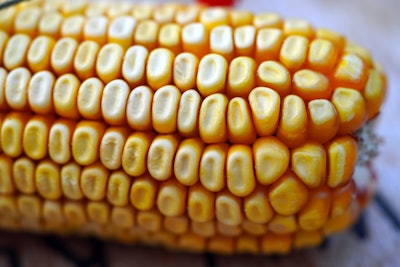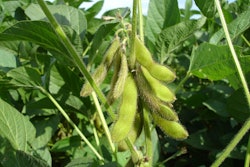
USDA released three major reports on January 12, including the World Agricultural Supply and Demand Estimates (WASDE), Annual Crop Production and Quarterly Grain Stocks reports.
The three reports show a smaller 2022 harvest and smaller domestic supplies of corn, soybeans and wheat.
Grain prices faced a mixed reaction following the release of USDA’s latest WASDE report.
According to reports, corn prices saw a modest improvement after the agency cut production estimates by 200 million bushels.
Soybean prices were also firm following a reduction of 69 million bushels.
Wheat struggled as 2023 winter wheat sowings increased to 37 million acres – the largest U.S. winter wheat crop planted since 2015.
WHEAT: The 2022/23 U.S. outlook this month is for increased supplies, larger domestic use, unchanged exports and lower ending stocks.
Supplies are raised on higher beginning stocks as reported in the most recent NASS Grain Stocks report.
Feed and residual use is raised 30 million bushels to 80 million based on higher second-quarter implied disappearance based on the Grain Stocks report. Seed use is raised 3 million bushels to 69 million, reflecting larger than expected winter wheat plantings reported in the most recent NASS Winter Wheat and Canola Seedings report.
Projected 2022/23 ending stocks are lowered slightly as larger domestic use more than offsets higher beginning stocks.
- The season-average farm price is unchanged at $9.10/bushel.
The 2022/23 global outlook is for increased supplies, exports, consumption and stocks.
World supplies are raised 1.3 million tons to 1,058.1 million on production increases in Ukraine and the EU. World consumption for 2022/23 is raised by 0.2 million tons to 789.7 million as higher feed and residual use for the U.S. more than offsets a decline for Ukraine.
Projected 2022/23 global trade is increased 0.8 million tons to 211.6 million as increases for the EU and Ukraine more than offset a decline for India. EU and Ukraine exports are raised 0.5 million tons each to 36.5 and 13.0 million respectively on higher exportable supplies.
- Projected 2022/23 global ending stocks are raised 1.1 million tons to 268.4 million, with increases for the EU, Ukraine, Kazakhstan and India more than offsetting declines in Saudi Arabia and Iran.
COARSE GRAINS: This month’s 2022/23 U.S. corn outlook is for reduced production, food, seed and industrial use (FSI), feed and residual use, exports and ending stocks.
Corn production is estimated at 13.730 billion bushels, down 200 million as an increase in yield is more than offset by a 1.6 million acre cut to harvested area.
Total corn use is reduced 185 million bushels to 13.915 billion. Exports are reduced 150 million bushels to 1.925 billion, reflecting the slow pace of shipments through December, and the lowest level of outstanding sales as of early January since the 2019/20 marketing year.
FSI use is lowered 10 million bushels, with reductions in corn used for starch and glucose and dextrose. Feed and residual use is down 25 million bushels to 5.275 billion, based on indicated disappearance during the September-November quarter as reflected by the Grain Stocks report.
With supply falling more than use, 2022/23 corn stocks are lowered 15 million bushels.
- The season-average corn price received by producers is unchanged at $6.70/bushel.
Global coarse grain production for 2022/23 is forecast down 7.3 million tons to 1,446.4 million.
This month’s foreign coarse grain outlook is for lower production, greater trade and reduced stocks. Foreign corn production is forecast down with declines for Argentina and Brazil partly offset by an increase for China. Production is reduced for Argentina reflecting declines to both area and yield, as heat and dryness during December and into early January reduce yield prospects for early-planted corn in key central growing areas. Brazil corn WASDE-632-2 production for 2022/23 is cut reflecting dry conditions for first-crop corn in parts of southern Brazil.
China corn production is higher based on the latest area and yield data from the National Bureau of Statistics. Barley production is raised for the United Kingdom but lowered for Ukraine.
Major global coarse grain trade changes for 2022/23 include increased corn exports for Ukraine and reductions for Argentina and the U.S. For 2021/22, Argentina’s exports for the marketing year beginning in March 2022 are lowered based on observed shipments to date, while Brazil is raised.
Corn imports for 2022/23 are lowered for Vietnam and Peru. China’s corn feed and residual use is raised based on a larger crop and lower sorghum imports. Foreign corn ending stocks are down, mostly reflecting reductions for Ukraine, Brazil, Pakistan, and Paraguay with a partly offsetting increase for China.
- Global corn stocks, at 296.4 million tons, are down 2.0 million.
OILSEEDS: U.S. oilseed production for 2022/23 is estimated at 126.0 million tons, down 2.0 million from the previous report on smaller soybean, sunflower, canola and peanut crops.
Soybean production is estimated at 4.276 billion bushels, down 69 million led by reductions for Missouri, Indiana, Illinois and Kansas. Harvested area is estimated at 86.3 million acres, down 0.3 million from the previous report. Yield is estimated at 49.5 bushels/acre, down 0.6 bushels.
The soybean export forecast is reduced 55 million bushels to 2.0 billion, reflecting lower supplies, reduced import demand for China, and a higher export forecast for Brazil.
With lower supplies only partly offset by reduced exports, ending stocks are projected at 210 million bushels, down 10 million from the previous forecast.
- The U.S. season-average soybean price for 2022/23 is projected at $14.20/bushel, up 20 cents.
- The soybean meal price is projected at $425/short ton, up $15.
- The soybean oil price forecast is unchanged at 68 cents/pound.
The 2022/23 foreign soybean supply and demand forecasts include higher stocks and lower production, crush and trade. Beginning stocks are raised due to an upward revision to Brazil’s 2021/22 soybean crop to 129.5 million tons, driven by higher-than-expected use through the end of the local year.
Foreign 2022/23 soybean production is lowered 1.3 million tons as lower production for Argentina and Uruguay is partly offset by higher production for China and Brazil. Argentina’s soybean crop is reduced 4 million tons to 45.5 million on lower area and early season heat and dry weather conditions.
China’s soybean crop is increased 1.9 million tons to 20.3 million on reports from China’s National Bureau of Statistics. Brazil’s crop is increased 1.0 million tons to 153.0 million on higher area. Foreign 2022/23 soybean crush is reduced 2.0 million tons mainly for Argentina and China. Argentina’s crush is reduced on lower supplies while crush for China is reduced on a lower than-expected pace during the first quarter of the marketing year.
Partly offsetting is higher soybean crush for Brazil. Foreign soybean exports are reduced on lower exports for Argentina that are partly offset by higher exports for Brazil. China’s imports are lowered 2 million tons to 96 million on lower crush demand.
- With higher beginning stocks and lower use, global soybean ending stocks are increased 0.8 million tons to 103.5 million.

















